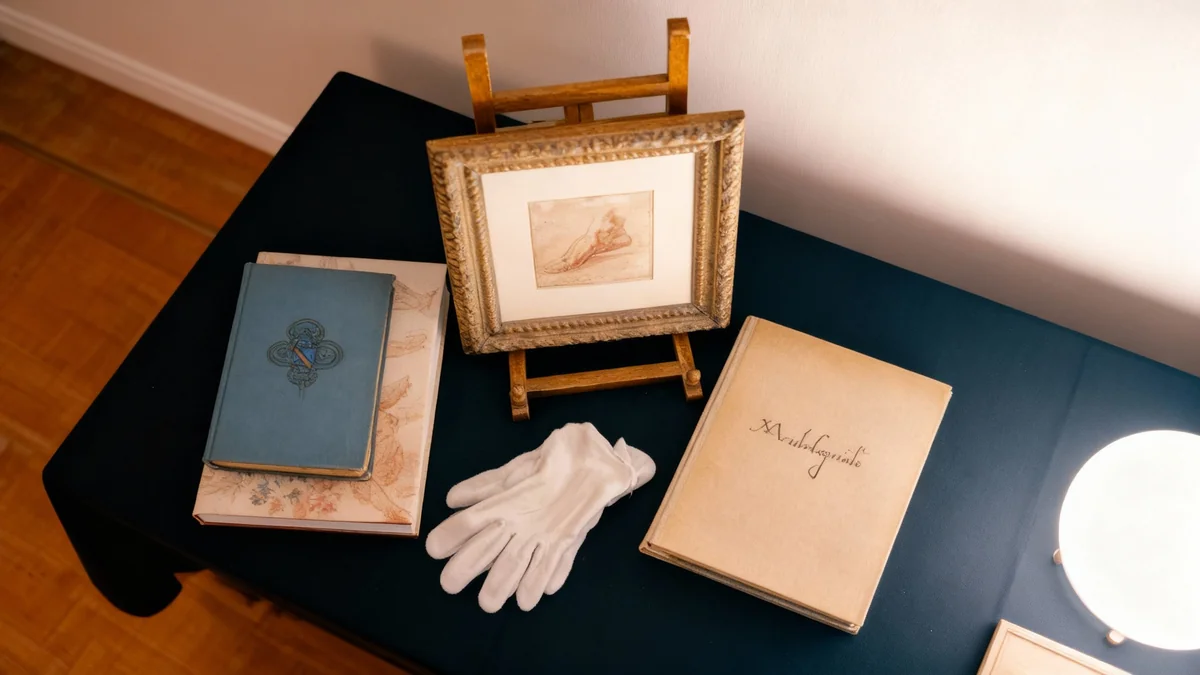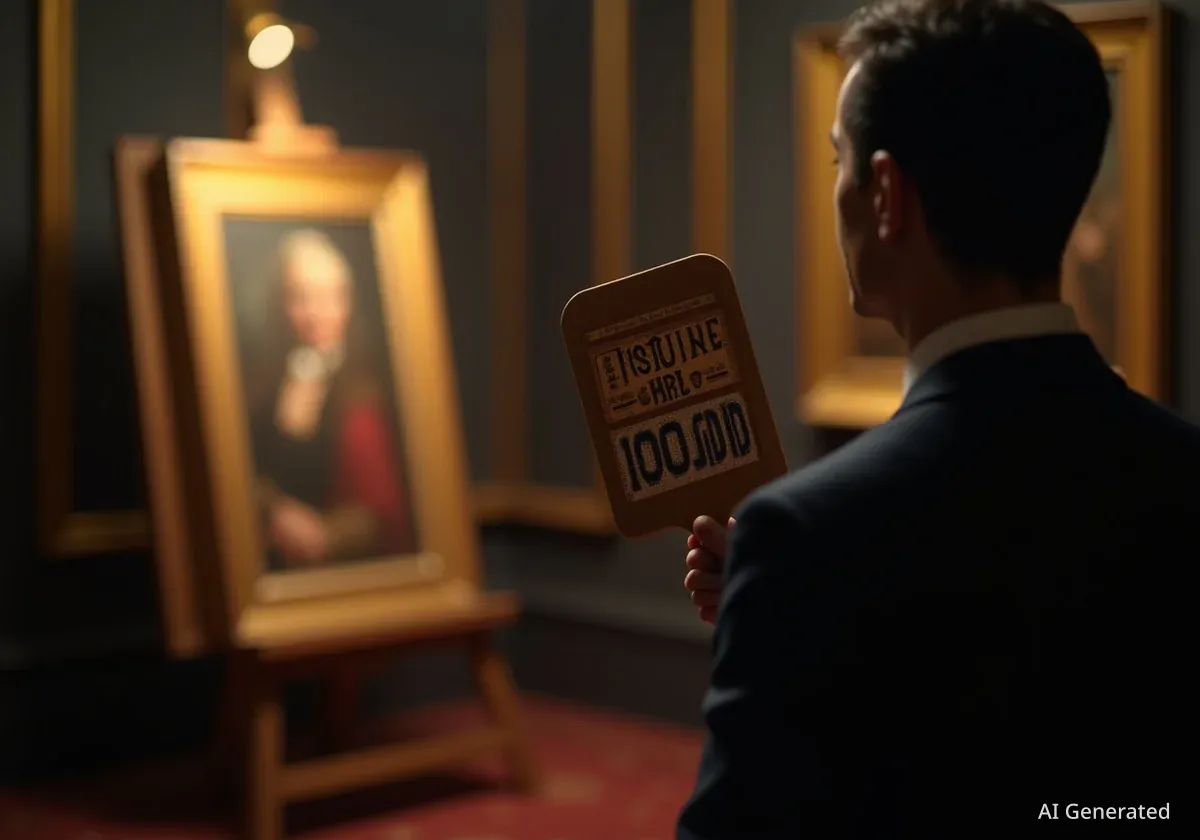Billionaire investor Thomas S. Kaplan is exploring the fractionalization of his extensive Old Masters art collection, known as the Leiden Collection. This move could allow portions of his art holdings to be offered as shares on a public stock exchange, making high-value artworks accessible to a broader range of investors.
Kaplan shared his plans in a recent interview with The Art Newspaper. The Leiden Collection is notable for its significant number of Rembrandt paintings, reportedly more than any other private collector owns. It also features crucial works by other Dutch and Flemish Old Masters.
Key Takeaways
- Thomas Kaplan plans to fractionalize his Leiden Collection.
- This could mean offering art shares on a public stock exchange.
- The collection includes numerous Rembrandts and a rare Vermeer.
- Kaplan cited his children's lack of interest in material objects as a reason.
- He aims to broaden access to Old Masters art ownership.
The Leiden Collection: A Wealth of Old Masters
The Leiden Collection stands as a premier private assembly of Old Masters art. It showcases a deep focus on Dutch and Flemish artists from the Golden Age. Kaplan and his wife, Daphne Recanati Kaplan, began building this collection in 2003.
Among its most prized possessions is Johannes Vermeer’s Young Woman Seated at a Virginal, painted between 1670 and 1675. This painting is one of only about three dozen known works by Vermeer in existence worldwide, highlighting its rarity and significance.
Collection Highlights
- Rembrandt van Rijn: Kaplan owns more Rembrandts than any other private collector.
- Johannes Vermeer: Includes Young Woman Seated at a Virginal (ca. 1670–75).
- Other Masters: Features works by Frans Hals, Gerard ter Borch, Pieter Brueghel, and Jan Steen.
The collection also contains significant pieces by Frans Hals, known for his portraiture; Gerard ter Borch, famous for genre scenes; and Pieter Brueghel, celebrated for his landscapes and peasant life depictions. Jan Steen, another prominent Dutch Golden Age painter, is also represented.
Works from the Leiden Collection are frequently loaned to major museum exhibitions globally. For example, the Vermeer painting was a central piece in a retrospective at the Rijksmuseum in 2023. This exhibition was described as a once-in-a-lifetime event for the artist.
Later this year, a traveling exhibition featuring works from the Leiden Collection is scheduled to open at the Norton Museum of Art in West Palm Beach, Florida, in October. This demonstrates the collection's ongoing public presence and scholarly importance.
Reasons Behind Fractionalization
Kaplan explained his decision to fractionalize the collection, citing personal and market-driven factors. He noted that his children do not share his passion for collecting material objects, particularly art.
"I think assets, such as really great art, are going to multiply manyfold because they are truly scarce, and there’s so much money sloshing around that will need a home and this is a great value proposition," Kaplan stated in The Art Newspaper interview. "To my mind the best way to evangelize for Rembrandt is by giving millions, maybe tens of millions, of ordinary people the opportunity to own a Rembrandt."
This perspective suggests Kaplan sees art as a stable and appreciating asset in a liquid global economy. He believes that scarce, high-quality art will continue to increase in value due to a surplus of capital seeking investment opportunities.
The concept of fractionalization, according to The Art Newspaper, was inspired by the NFT (Non-Fungible Token) trend of the early 2020s. While the Vermeer painting is not currently being offered as an NFT, the underlying idea of shared ownership appears to have influenced Kaplan's thinking.
What is Fractionalization?
Fractionalization in art refers to dividing ownership of a single artwork into multiple shares or units. These shares can then be bought and sold, similar to stocks. This process makes high-value assets more accessible to a wider range of investors who may not be able to afford the full purchase price of an entire artwork.
Building the Collection: A Rapid Pace
Kaplan's journey as an art collector began in 2003. Alongside his wife, Daphne Recanati Kaplan, he acquired art at a rapid pace. He once told The New York Times that he was buying "about a painting per week" during the initial years.
This intense period of acquisition lasted until 2008. While he still buys art, he does so at a slower rate now. The collection, which comprises about 250 pieces, was largely lent anonymously until 2016.
The anonymity ended when the Louvre Museum in Paris hosted an exhibition specifically dedicated to the Leiden Collection. This event brought the collection and Kaplan's role as a collector into public view.
The monetary value of the Leiden Collection has never been disclosed publicly. However, individual pieces are known to be highly valuable.
Philanthropic Endeavors and Future Plans
Beyond the potential fractionalization, Kaplan has also engaged in philanthropic efforts related to his art holdings. Earlier this year, he announced plans to sell a Rembrandt drawing of a lion.
The proceeds from this sale are intended to benefit Panthera, a wildlife conservation organization. Kaplan estimated the drawing's value to be in the "multiples of tens" of millions of dollars, underscoring the significant value held within his collection.
Kaplan identifies himself as a "Rembrandt evangelist." His desire to fractionalize the collection aligns with his stated goal of promoting Rembrandt's legacy and making it more accessible. By allowing millions to potentially own a share of a Rembrandt, he aims to broaden appreciation and understanding of these historical masterpieces.
This strategic shift represents a notable development in the world of art collecting and investment. It reflects evolving views on art ownership and accessibility in the 21st century.




